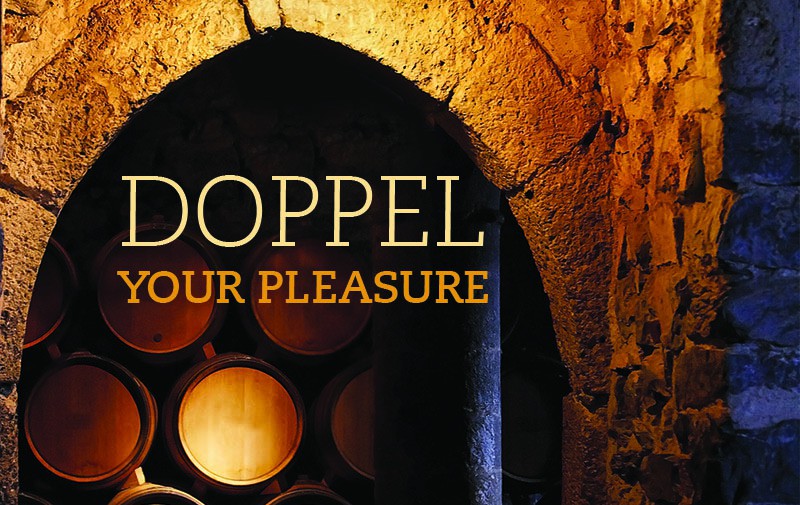
In the Bible it’s said that man cannot live by bread alone. However, it may be possible to temporarily survive on doppelbock, a brawny German beer that’s nicknamed “liquid bread.”
The hearty doppelbock resides in a category of strong German lagers called bocks. Its lager cousins curtail fall’s first chill, but winter’s icy clutch requires the warming prowess of a true doppelbock (“double bock”). It’s a fairly hefty beer style, with an ABV hovering between 7 and 10 percent and, typically, a hue that ranges from rich gold to a ruby brown. As for flavor and aroma, top billing goes to malt, with notes of toffee, caramel, dark fruits, and chocolate along for the sweet ride; bitterness hides in the backseat.
As for its liquid-bread designation, allow me to explain: As with any alcoholic beverage, beer contains calories. The stronger a beer, the higher its caloric count. Thus, a lager of sizable potency could theoretically sustain men—like the food-shunning monks who fast during the 46 days of Lent (excluding Sundays) that lead up to Easter. In the seventeenth century the brothers of Munich’s St. Francis of Paula (a.k.a. the Paulaner monks) received a papal dispensation to brew a brawny beer suited for consumption during Lent. The beer was known as Sankt Vaterbier, or Holy Father Beer, until the name was corrupted into Salvatorbiere—that is, Salvator, or “savior.”
In time the style’s popularity spread beyond monastery walls. The brothers began illegally selling the beer, before receiving proper permits in 1780. Too bad Napoleon rolled into Munich at the end of the eighteenth century and banned churches from owning property or earning money. The monastery and brewery were shut down. Doppelbock as the hearty style came to be named, seemed doomed.
Salvation came in 1806. The Bavarian state rented the brewery to secular brewer Franz Xaver Zacherl, who licensed rights to produce the doppelbock. Salvator climbed in popularity, especially around Easter, and competing breweries soon borrowed the name. It nearly became as generic as Band-Aid, but Zacherl’s successors trademarked the Salvator name in 1896. Competitors’ response was to attach the “-ator” suffix to the name of their doppelbocks, a tradition that endures for both American and German brewers.
With regard to cheese pairings, the sweet doppelbock is an excellent match for many styles. Try it with a Swiss-style wedge, such as DCI Cheese Company’s Stella Swiss or the namesake of Iowa’s Swiss Valley Farms. The strong beer also complements an earthy, bloomy Camembert, such as Marin French Cheese Company’s Rouge et Noir or Ferme de la Tremblaye, a farmstead Camembert from France. Additionally, doppelbocks have an affinity for stinky, pungent Limburger cheese, such as the version made by America’s sole producer, Wisconsin’s Chalet Cheese Cooperative. Fittingly, it’s a match made in heaven.
FIVE TO TRY
Paulaner Brauerei Salvator
The original doppelbock has not dulled over the centuries, still offering up a rich riot of fruit, caramel, and a bit of bitter chocolate to boot. The copper-colored beer tastes a bit like fresh-baked bread drizzled with toffee.
Brauerei Aying Ayinger Celebrator
My favorite doppelbock is Celebrator, a delightful mocha-brown brew that delivers a nose of Christmas fruitcake and cocoa. Celebrator slides down nice and silky, with lovely flavors of chocolate, coffee, and sun-baked dark fruit.
Samuel Adams Double Bock
This doppelbock is a malt bomb, with around half a pound of barley required for each 12-ounce bottle. As you’d expect, there’s oodles of rich, chewy sweetness—think molasses, caramelized sugar—that’s balanced by a subtle bitterness.
Tröegs Brewing Company Troegenator Double Bock
Given the Pennsylvania brewery’s location in Hershey, it’s a no-brainer that they’d brew this big, sweet, ruby-brown beauty. There are flavors of chocolate and figs, but I like the gentle spiciness that pairs well with its stomach-stoking warmth.
Smuttynose Brewing Company S’muttonator
Around 30 hours of brewing time is required to craft S’muttonator, a muscular testament to malt. Pour a snifter, and savor the interplay of molasses, toffee, and brown sugar, with a bready and fruity profile. You could have this doppelbock for dinner.







